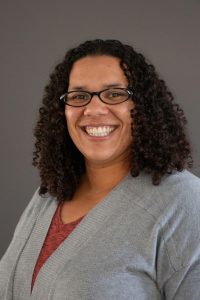by El Fisseha, business manager

Teaching Tolerance states, “Our mission is to help teachers and schools educate children and youth to be active participants in a diverse democracy.” By offering free classroom resources and professional development opportunities Teaching Tolerance aims to help educators grow young minds to be agents of change through social justice and anti-bias education.
Focusing on topics like Race and Ethnicity; Religion; Ability, Class; Immigration; Gender and Sexual Identity; Bullying and Bias; and Rights and Activism, Teaching Tolerance touches on areas of education that are relevant to fostering positive learning environments. Famed Italian physician and educator Maria Montessori said, “One test of the correctness of educational procedure is the happiness of the child.” By creating a classroom environment that is a safe space for all, both through the example of the instructor and expectations of the students, educators provide the best possible opportunity for academic growth. I believe Teaching Tolerance offers guidance on how to do exactly that.
Teaching Tolerance is geared toward K-12 educators. This strikes me as a resource that can be particularly valuable to music education students who aim to be teachers in the near future. Providing them with these resources before they start their careers will benefit society as a whole. I truly believe there is information within that can help people of all ages advance and grow their professional strategies to be more inclusive and more welcoming. To quote Jane Goodall, “What you do makes a difference and you have to decide what kind of difference you want to make.”
I am particularly fond of the sections of Teaching Tolerance that encourage educators to teach material that includes diverse populations.
Representation matters. It is powerful for students to see themselves positively reflected in materials from which they learn.
Even when teaching difficult and sometimes distressing topics, positive influences can be found and should be included. For many years I have worked with, the Crafting Freedom Institute, a non-profit organization that develops educational materials for teachers to use to educate students about African American history in the antebellum south. While still highlighting the horrors experiences by black people, most often slaves, in this time and place the project focused on ways people found to better their lives.
One such story teaches how Elizabeth Keckley, a talented seamstress and the sole slave at the Burwell School for Girls, worked in her limited off-hours to create and sell clothing. After 30 years she was able to earn enough money to buy her freedom. Through her work, she became a close friend and confidant for Mary Todd Lincoln during Lincoln’s years in the White House. After having spent 30 years as a slave, Elizabeth Keckley was one of the most sought after seamstresses amongst the wealthiest and highest class women in America.
At the Crafting Freedom Institute, we often hear from teachers how including narratives like Keckley’s have altered the way their students react and learn while studying this period of history. No longer is the lesson that all blacks in this time were poor, helpless slaves, but rather that there were smart and talented people who refused to be resigned to a “destiny” and found a way not only to survive but to thrive.
I recommend Teaching Tolerance as a wonderful resource for educators. It helps frame positive ways to address issues that are difficult and sensitive, but critically important. Through a better understanding of one another will come more acceptance, and acceptance will allow for growth. As Lady Gaga said, “I think tolerance and acceptance and love is something that feeds every community.”
